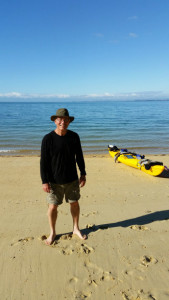 It is easy to be a travel writer, for these days there are thousands of outlets for your message and plenty of helpful web sites. In truth however, there are very few good travel writers, because there are very few outlets for honest travel writing.
It is easy to be a travel writer, for these days there are thousands of outlets for your message and plenty of helpful web sites. In truth however, there are very few good travel writers, because there are very few outlets for honest travel writing.
Travel writing is not different from any other writing product … and there’s precisely where the story begins. Travel writing, perhaps more than any other genre, is a product.
A “product” is an item in competition with other, similar items. Professional travel writers are paid for their work. It is a business, not an art. First, they get free or discounted airline tickets; then they get an all-expenses paid visit to wherever they are going or whatever they are doing; then, of course, they are paid by some periodical for their commentary. If they can perform a wee bit of editing magic and combine revised copy with different photos, they might be able to sell the story – or a similar story – a second time, and only then will they actually make a profit.
If writers take photographs, the periodical will only use those of the highest quality (rarely is an excellent writer an excellent photographer). And good photos are paid at a much higher rate than the copy. Almost anyone can visit a few web sites and smooge-up acceptable copy. High quality photos, however, are a work of art plus professional computer manipulation. A few excellent photos will often sell an average story.
The periodical the professional writer sells to, being a capitalist enterprise, is also a business that wants to maximize its own profit and minimize its expenses. The travel writer is an expense.
In today’s publishing environment when there are thousands more electronic outlets than print outlets, advertising dollars rule. Money from subscriptions is irrelevant to a magazine’s bottom line. It is a very simple equation. The publication will charge a venue – a Caribbean beach resort or a Colorado ski lodge, for example – thousands of dollars for a page of advertising and will promise the media agency that creates and places the advertising – called a “space buy” – in an illustrated “travel piece” in a coming issue. (Look for instance at the open rate structure in the Media Kit for Condé Nast Traveler.) The advertising manager contacts the editor who in turn contacts one of his or her trusted writers, and the game is afoot.
If the writer submits a story that could even in the least manner be interpreted as negative, the editor will telephone, inquire, and demand a change. In a case where the resort or subject of the story is obviously, egregiously at fault – the writer, remember, is lowest on this totem pole of cash – he may demand a softening of the language. Or he may deep-six the entire story; no travel story ever runs in an expensive, respected publication that is negative about the host. Or he may delete a photograph showing the pile of trash, dead animals, or soiled toilet paper behind the white palm-lined beach.
I can illustrate each of the above notes with personal examples:
- In 1986, a dive resort on Roatán Island on the Caribbean side of Honduras offered a picturesque cabana over the bay. It was not until late in the trip that I noticed that toilets fed directly into the bay … and thus declined to either eat or write about the “fresh, locally-caught seafood.”
- In 1994, during the editor’s second call about my submitted story, the editor said he had talked to the manufacturer in question and admitted the product he had asked me to review was being recalled. He offered me a kill fee of half the original, agreed-upon price – which I had to accept. The story would not be published because “there are too many other good products to waste valuable space reviewing a bad product.”
- In 2010, an editor said he would not consider using one of the photos I submitted from our sail in the Abacos Sea. Too much “background noise,” he said. In other words, the trash tossed – apparently for years – beneath the staircase of the quaint lighthouse might deter tourism, and The Bahamas government (an advertiser) had few other sources of revenue. In other words, everyone’s product and my personal brand would suffer.
Those interested in travel writing must decide whether they will “tell it like it is” or conform to industry standards or work toward some compromise position. A completely honest travel writer should start a blog, perhaps “HonestTravel.com” or “NoLieAboutTravel.com.” (Here are two that have done very well: Nomadic Matt and Adventurous Kate). Or find a way to alert the reader between the lines so to speak, perhaps by presenting something noncommittal such as the breakfast buffet was decorated with magnificent hibiscus blossoms, and leave the reader to wonder, “How was the food?” Often, in travel writing, by not directly addressing the issue, your silence or equivocation will speak for itself, and you may don the mantle of profit AND honesty, if however uneasily.
NOTE: There is a great deal of nonsense written about travel writing, but thousands of outlets today look for travel pieces. Your story can be highly specific, even off the wall – ping pong in Peru, or toilet tour of Savannah (I read this one!), or best strip joints for truckers. Truthfully, the more off-the-wall the better the chance of being published – somewhere – all things being equal.

Susie Baxter
I like your suggestion to alert the reader to read between the lines. The lack of information says what you dare not say.